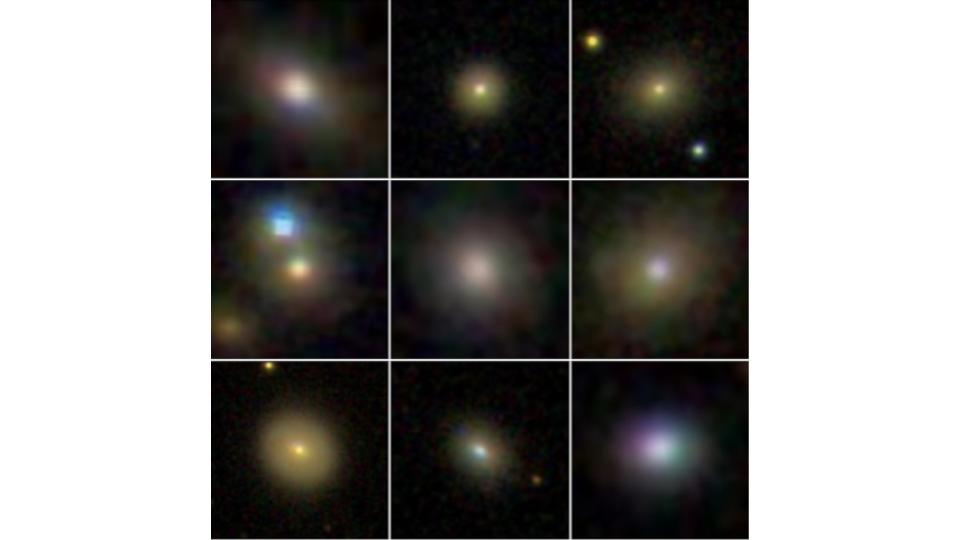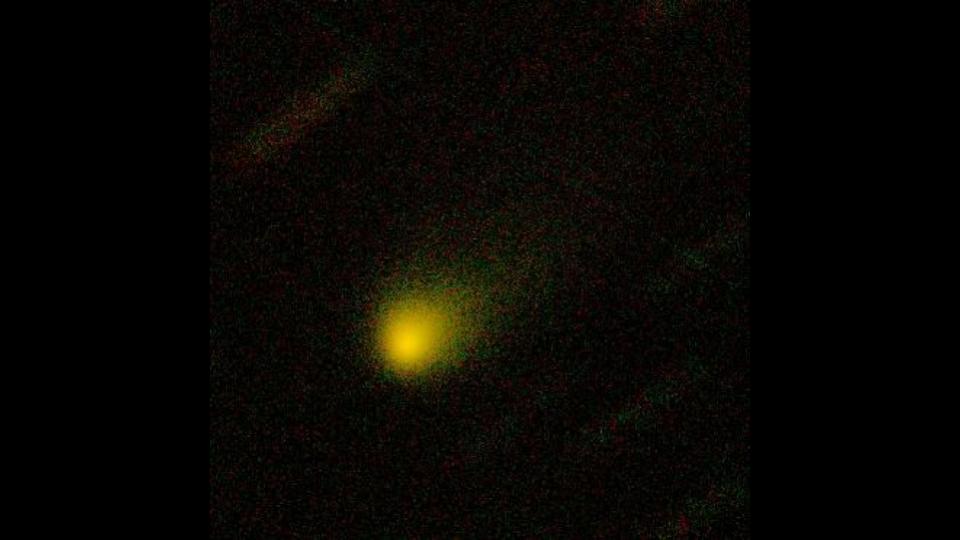Today’s news is all about small blobs of light in the sky. Most distant, we find ourselves looking at the halos of massive galaxies and newly resolved structures. From there, we jump to dward galaxies with massive black hole associated high speed outflows. Finally, we have an update on the extrasolar comet 2I/Borisov.
Transcript
This is the Daily Space for today, Tuesday, October 15, 2019. I am your host, Dr Pamela Gay, and I am here to put science in your brain.

- HERON survey fishes out detail in ghostly galaxy outskirts (Press Release)
Today’s news starts with a story of galaxies that are far more than the eye can see. In a new publication in the Monthly Notices of the Royal Astronomical Society, R Michael Rich and his collaborators release a new survey of the outskirts of nearby galaxies. By taking successively longer images that reveal fainter and fainter structures, this team has been able to reveal the true extent of galactic halos. They find that these diffuse regions of gas, dust, and ejected stars have sizes that correlate with brightness and type of galaxy they surround.
In many gases, they were also able to image the faint spirograph like structures formed around large galaxies as they gravitationally disrupt smaller systems.
These deep images were also able to reveal other evidence of past galaxy interactions, such as a warp in the halo of an edge on spiral galaxy.
Beyond doing remarkable science, this study is also noteworthy for its engineering. The survey team used 0.7m or 28-inch telescopes with a prime focus CCD capable of doing widefield imaging. This fast system was capable of imaging the faint halos as quickly the 3.5m Canada-France-Hawaii Telescope, but at a significantly lower cost. Matching telescopes have been built in Frazier Park, California and Mitzpe Ramon, Isreal.
If you want to explore this images for yourself, you’ll be able to in the future. The team will be archiving all their data at the NASA’IPAC Infrared Science Community Archive.

- Black holes stunt growth of dwarf galaxies (Press Release)
- Sloan Digital Sky Survey (Official Site)
- Keck I And Keck II Telescopes (Keck Observatory Site)
Today’s news is dominated by faint fuzzy objects, that vary greatly in size. From massive galaxies, we now move to dwarf galaxies that are more than 100 times smaller. In a new study published in the Astrophysical journal, a team that included Lara Sales, Chirtina Manzano-King, and Gabriela Canalizo, looked for evidence of gas outflows associated with the system’s central supermassive black holes. While studying 50 dwarf systems, they were able to identify 29 that appeared to have black holes in their centers, and of these 29, 6 galaxies had massive outflows, with gas flowing as much as 1000 kilometers per second. This was the first time this kind of an outflow has been seen, and it helps explain the lack of stars seen in this kind of galaxy. This massive of a wind can push the material that would otherwise form future generations of stars entirely out of the galaxy, leaving behind a wasteland of old and dying stars. According to Sales, “Theoretical models for the formation and evolution of galaxies have not included the impact of black holes in dwarf galaxies. We are seeing evidence, however, of a suppression of star formation in these galaxies. Our findings show that galaxy formation models must include black holes as important, if not dominant, regulators of star formation in dwarf galaxies.”
This work is remarkable, but still leaves us with a lot of questions. Not all dwarf galaxies appear to have black holes in their cores, and this work doesn’t help explain those systems, or why some dwarf galaxies do or don’t have supermassive black holes. Clearly, more observations and theoretical models are needed, but this work is a nice step forward in understanding.

- Interstellar comet with a familiar look (Press Release)
- The Extrasolar Planet Encyclopaedia — 2I/Borisov (Exoplanet.eu)
- 2I/Borisov (Wikipedia)
From galaxies, we now turn our attention to the solar system visitor comet 2I/Borisov. This comet from another solar system is continuing its journey closer and closer to our sun, and as it does so, every telescope that can observe it, is observing it. And so far… it appears utterly ordinary. This is both exciting, and terribly frustrating, because at a certain level we all would love to find weird molecules or observe strange behaviors. This comet, however, is just average, showing that at least in this one situation, the kinds of things formed in other solar systems match what is formed in our own solar system.
And that rounds out our show for today.
Thank you all for listening. The Daily Space is produced by Susie Murph, and is a product of the Planetary Science Institute, a 501(c)3 non profit dedicated to exploring our Solar System and beyond. We are made possible through the generous contributions of people like you. If you would like to learn more, please check us out on patreon.com/cosmoquestx
Each live episode of the Daily Space is archived on YouTube. If you miss an episode here on Twitch.tv, you can find it later on youtube.com/c/cosmoquest. These episodes are edited and produced by Susie Murph.
We are here thanks to the generous contributions of people like you who allow us to pay our staff a living wage. Every bit, every sub, and every dollar committed on Patreon.com/cosmoquestx really helps. If you can’t give financially, we really do understand, and there are other ways you can help our programs. Right now, the best way you can help is to get the word out. Let you friends know, share our channel to your social media, or leave a recommendation. You never know what doors you are opening.
We really wouldn’t be here without you – thank you for all that you do.


 We record most shows live, on Twitch. Follow us today to get alerts when we go live.
We record most shows live, on Twitch. Follow us today to get alerts when we go live.